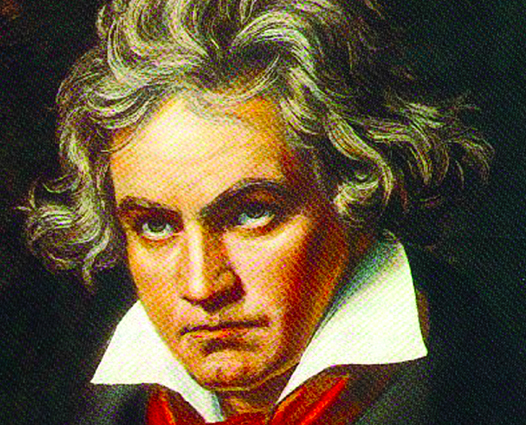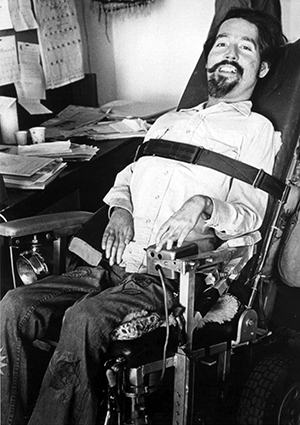
Overview
Reading, research and interactive group activities are used to learn about famous and influential individuals with disabilities. Students can also select a person to research and present their findings through writing projects and interactive games and learning activities. The activities in this lesson work well as part of a broader social studies unit or within an interdisciplinary unit on disability history and experience.
Disability Awareness Focus: Disability Research.
Grade Level: Grades 4–12.
Subject(s): Language Arts, Social Studies and Math.

Standards
Demonstrate independence in reading texts and in writing and speaking about them.
Build strong content knowledge.
Respond to the varying demands of audience, task, purpose and discipline.
Write informative/explanatory texts to examine and convey complex ideas and information clearly.

Materials
- Print, video and online biographies.
- Famous People Research Tools: Assignment Sheet, Idea Mapping Worksheet and Research Paper Checklist for supplemental research activity. You may want to include a storyboard template for students who want to make a visual presentation.
- Different templates are available online for free download.
Time: This lesson can be spread out over a series of 20 to 40 minute sessions. Students reading more advanced texts may require homework time or additional study periods.The time needed depends on the activities chosen and whether they are being incorporated into a broader disability studies project.

Directions
Lesson Preparation: Collect books, multimedia and online materials for researching. Include photographs and primary or secondary narratives. Copies of the book “Extraordinary People with Disabilities” and other autobiographical and biographical resources may be available for loan from your school or public library. Suggestions of possible individuals and/or interest areas to focus on are offered in the activity sheets included with this lesson. These can be updated to include other people and types of accomplishments.
Starting the Lesson: Ask students to read or listen to a story about a person with a disability. Some suggestions of people to study are included with this lesson. As they listen or read the story, ask students to keep a list of key facts: Who are they? Where do they live? What are they like as a person? What is their disability? What is their family or community life like? Why are they famous or noteworthy? After doing one reading together, have students choose a book to read on their own or in a small group. As they read the story, students should identify three to five important facts to include in their own profile of the person.
Writing or Small Group Discussion: Have students break into small groups or come together as a class and present their profiles of the famous and newsworthy people they selected. As a group, discuss the skills, abilities or characteristics these individuals have in common as well as what makes each person unique. What is it that makes each person famous or important? After the group discussion, have students write a journal entry or informal essay about this person.
What did they admire about each person and what questions or ideas occurred to them as they read or listened? (For example, students may be interested in people involved in an activity that they are passionate about, such as the arts, sports, environmental or social justice, media careers or politics. They may identify and admire people who have certain personal characteristics, habits or skills. They may come up with questions or observations about how individuals handle living with a disability.)
Large Group Discussion: After completing the writing or small group discussions, bring students together to present the famous or noteworthy people they chose to focus on. Ask the class if they can identify any unique or shared characteristics, abilities or leadership skills that stand out as most important or interesting. Post a list of these skills or characteristics on a blackboard or wall so that they are available to students as they continue this mini-unit. Invite students to add to this list as classwork on this topic continues.
As a follow-up discussion and/or writing activity, ask students one by one if they can identify a person with a disability who is not famous but who they admire. Ask them to describe why that person is important to them and to think about what this person has in common with the famous people they have been discussing.

Supplemental Activity
“Who Am I?” Game: This activity is very popular! Collect the students’ profiles of famous people and tape a profile (with the name, picture and at least three important and interesting facts about the person) on each student’s back. Make sure students don’t see the person they are given! Everyone circles the room. Each time a student meets another student, they share one of these facts and see if the person can guess the famous person whose name and facts they are wearing. This is a fun way to review facts and strengthen memory.
Ready, Set, Go: Students can use their famous people fact sheets to explore characteristics people have in common. With everyone in a circle, have people take turns giving a fact or characteristic about their subject and have other students step into the circle if their famous or noteworthy person shares this characteristic. This activity lets students explore the math concept of sets as they identify the characteristics, interests or accomplishments different people have in common.
“Match the Name with the Fame” Game: This activity can be played alone, in small groups or as class activity. Sample name and profile sheets are provided with this lesson. Students match the names of individuals with their accomplishments and disability experience. It is a good way to help students reinforce and test their memory of important information about the lives and work of famous or newsworthy people with disabilities. You can adapt the materials to include other famous or important people with disabilities your class is studying. Each bingo sheet profiles six different individuals. Distribute the name sheets and the matching profiles to individual students or teams. Call out a name and have students look for a correct match. When the time is up, read the answers in class so that students can check their own answers.
“Famous People Jeopardy” Game: As students become experts in their particular famous or noteworthy person, they will begin to collect and share information that can become the basis of a class-created Famous People Jeopardy Game. The class can work in small groups and as a class to generate a list of people in different categories of fame (science, the arts, media, activists, local leaders, etc.) and then test their knowledge with the game. This is fun played in teams. It can be expanded to include famous people with and without disabilities and is a good way to help students become familiar with leaders from different social and cultural backgrounds.
Supplemental Activities
Math: Ask students to organize the famous people studied into different categories and use graphs to profile these individuals by their areas of fame. Identify how many individuals were researched and what work or accomplishments made them famous or noteworthy. Some individuals will fit into more than one category.
Longer Research Project for Older Students: Ask students to choose a famous person with a disability to study. Depending on students’ reading abilities, learning styles, your class schedule and processes, use your selected books and materials as either independent reading options, team projects, or as materials for the teacher and students to read aloud and explore. Classes can choose to use library materials or online and multimedia resources. Have students prepare an essay or research paper on the person they chose or a few students can work together on an essay presenting the lives and accomplishments of two or three famous people who have something in common. A Research Assignment and an Idea Mapping Worksheet are included with this lesson.
Visual learners and artists could choose to draw a storyboard showing the life experiences and accomplishments of the person they researched, including a key fact sheet and references to back up their work.
Portrait: Using images, colors, words and other creative elements, have students create a painting, drawing or collage of the person they researched.
Class Newsletter, Booklet or Webpage: Develop a booklet, class webpage or other multimedia presentation on the famous and newsworthy individuals studied. This is a good way to present student writings, art and observations about the individuals whose lives and accomplishments they chose to explore, and to recognize both famous people and unsung heroes. It also lets students develop and use media tools and skills.
Resources
General Resources
Some biographical books are included in the booklist on the Include! website. Students can also use the school library or visit relevant websites to find autobiographical and biographical writings and audio and video materials by and about famous and noteworthy people with disabilities. One website, the MY HERO Project, presents short biographical profiles of famous people submitted by students and teachers. These include a few disability profiles, but students can help spread the word by submitting their essays about people with disabilities who have helped change the world for the better. Famous and noteworthy people with disabilities are also profiled in several disability history websites and online museums (see Include resource links).
The Disability and the Arts lesson in this unit highlights some other famous and noteworthy people with disabilities.